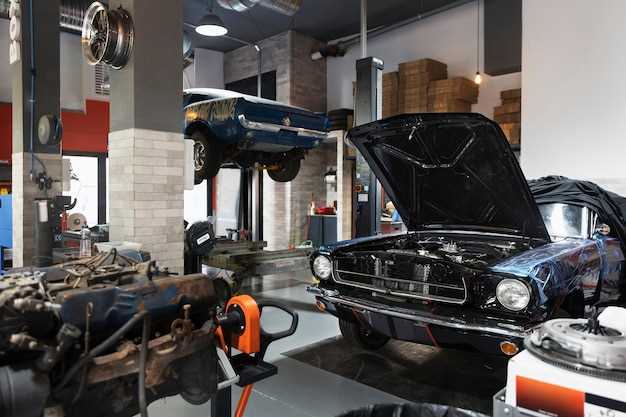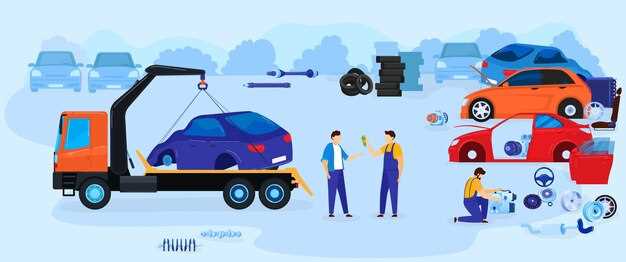
The automotive world is filled with opportunities, and one of the most intriguing prospects is the process of rebuilding salvage cars for resale. Many enthusiasts and entrepreneurs are drawn to this niche market, hoping to flip cars at a profit. However, the question remains: is it truly a profitable venture?
At the heart of this discussion lies the concept of value. When purchasing a salvage car, one must carefully assess its condition and potential for restoration. The initial investment can be risky, as not every salvage car will yield a significant return. Understanding the value of parts, labor, and the final product is crucial in determining profitability.
Moreover, the flipping of a salvage car goes beyond just physical repairs; it involves strategic planning and market knowledge. Identifying the right makes and models that attract buyers can make a substantial difference in recovery value. Those who succeed in this endeavor often find a harmonious blend of passion and business acumen necessary to turn a neglected vehicle into a desirable asset.
Understanding the Costs Involved in Salvage Car Repair

Rebuilding a salvage car for resale can be a lucrative venture, but it is essential to understand the various costs involved in the repair process. Here are the key factors to consider:
- Purchase Price: The initial cost of acquiring a salvage car significantly influences the overall expenses. Research the market value to ensure you are getting a good deal.
- Repair Parts: A major component of the total cost comes from the parts needed for repairs. This includes:
- OEM parts, which can be more expensive but offer better quality.
- Aftermarket parts, which might save money but could impact the car’s value negatively.
- Labor Costs: Depending on your skill level, you can either perform the repairs yourself or hire a mechanic. Labor costs can vary widely based on complexity and location.
- Tools and Equipment: Investing in the right tools is crucial. If repairs are extensive, you may need special equipment, which adds to the initial cost.
- Inspection Fees: After completing repairs, the car typically requires a thorough inspection to ensure it meets safety and regulatory standards. This step incurs additional expenses.
- Title and Registration Fees: A salvage title can complicate the resale process, and ensuring the car is legally registered after repairs can incur fees.
- Insurance: While rebuilding, consider liability insurance and coverage during the repair process, as this could add financial weight.
- Miscellaneous Expenses: These can include costs for towing, storage, and unexpected repairs that may arise during the restoration process.
When considering the potential profit from flipping a salvage car, it’s crucial to calculate all these costs accurately. Understanding these expenses will help you assess whether rebuilding a particular car makes financial sense and what its resale value might be after repairs are completed.
Evaluating the Market Demand for Rebuilt Vehicles
Assessing the market demand for rebuilt vehicles is crucial for anyone considering flipping salvage cars for profit. The first step in this evaluation is understanding the overall reputation of rebuilt vehicles among consumers. Many buyers are cautious about purchasing a rebuilt car due to concerns over quality and safety, which can significantly affect resale value.
To successfully navigate the market, it’s essential to conduct thorough research on the specific makes and models that have seen consistent popularity. Targeting cars that are known for reliability and strong aftermarket support can enhance the potential for resale. Popular brands often retain their value better than others, making them more attractive for buyers.
Monitoring online marketplaces and local classifieds provides insight into price trends and demand fluctuations. Analyzing listings for similar rebuilt vehicles can help establish a competitive pricing strategy. By understanding how quickly comparable cars sell, you can better gauge the potential return on investment when flipping a salvage car.
Additionally, engaging with online forums and communities focused on rebuilt vehicles can yield valuable opinions from potential buyers. This engagement can inform you about the features and capabilities that are most sought after, enabling you to tailor your rebuilding process to meet market preferences.
In conclusion, while flipping salvage cars can be profitable, the key to success lies in evaluating market demand effectively. By focusing on value retention and leveraging consumer insights, you can maximize your chances for a successful resale.
Calculating Profit Margins: Resale Value vs. Total Investment

When embarking on the journey of flipping a salvage car, understanding the profit margins is crucial to ensuring a successful investment. To achieve maximum profitability, one must compare the anticipated resale value of the car with the total investment made in the rebuilding process.
First, it’s essential to establish the total investment, which consists of the purchase price of the salvage car, repair costs, parts, labor, and any additional expenses such as taxes, fees, or transportation costs. By accurately tracking these expenses, an investor can determine the total amount spent before putting the car up for sale.
Next, the resale value must be estimated. This involves researching similar models that have been successfully flipped in the market. Factors influencing this value include the car’s condition, brand, year, and demand. Additionally, proper marketing can significantly enhance the perceived value of the vehicle, potentially leading to higher offers from buyers.
To calculate the profit margin, subtract the total investment from the resale value:
Profit Margin = Resale Value - Total Investment
If the result is positive, the flip can be deemed profitable. A robust strategy involves aiming for a profit margin that covers not just the costs but also provides a satisfactory return on investment. Typically, seasoned investors recommend targeting a minimum profit margin of 20-30% to account for unforeseen expenses and potential market fluctuations.
Ultimately, careful calculations pertaining to both the resale value and total investment will dictate whether flipping a salvage car is a viable and profitable endeavor. Analyzing these variables helps investors make informed decisions and increase the likelihood of success in the competitive automotive market.
